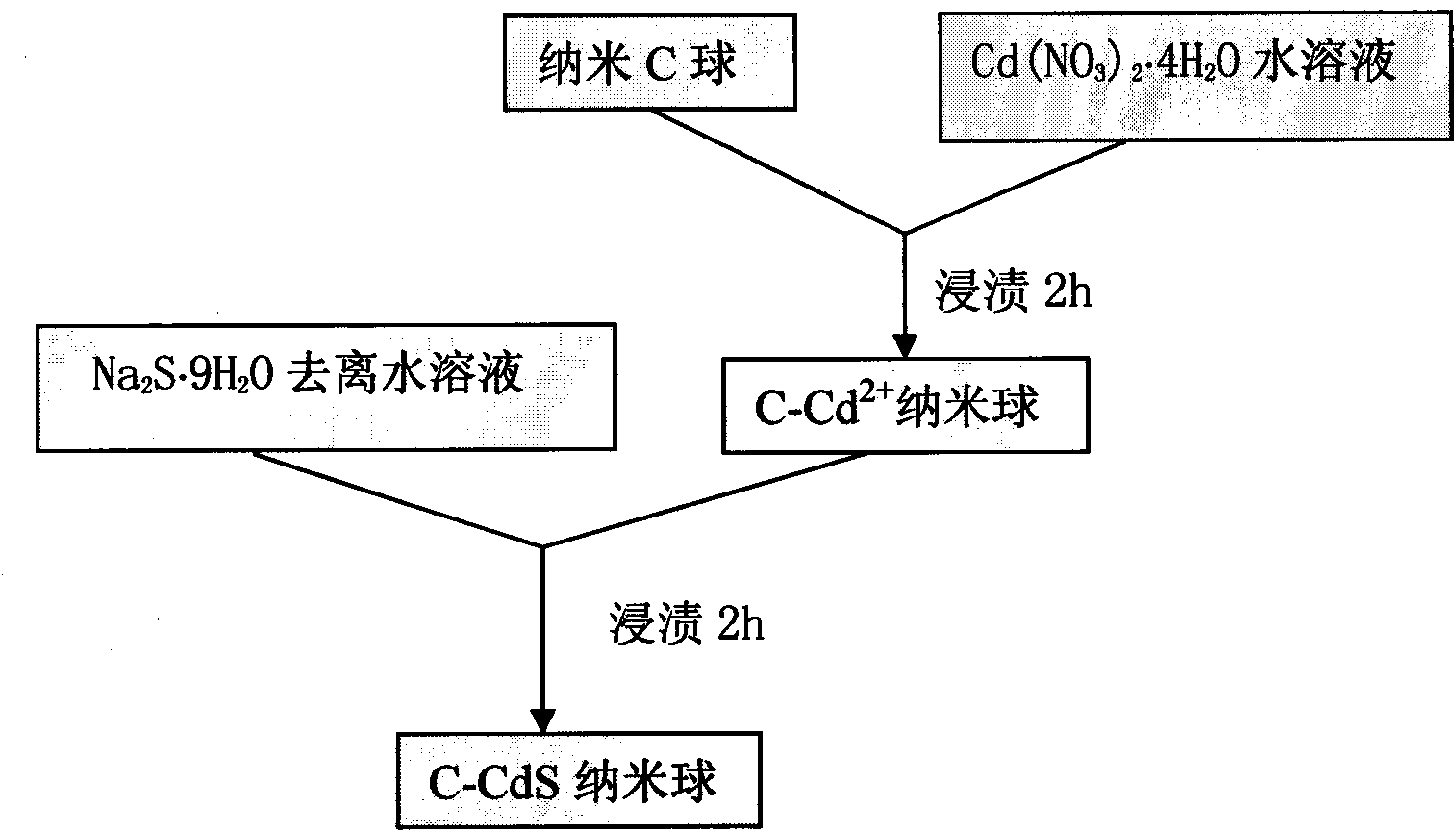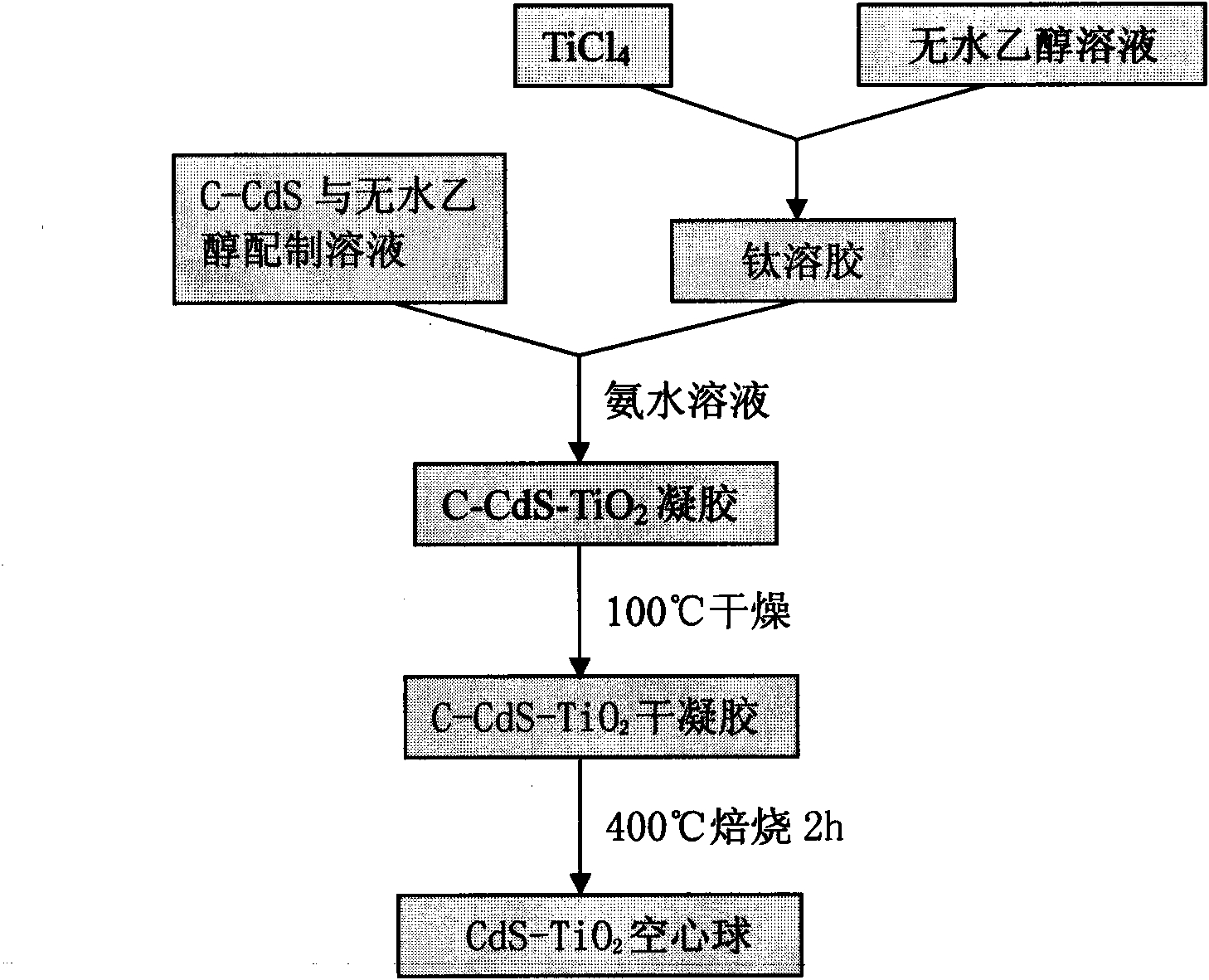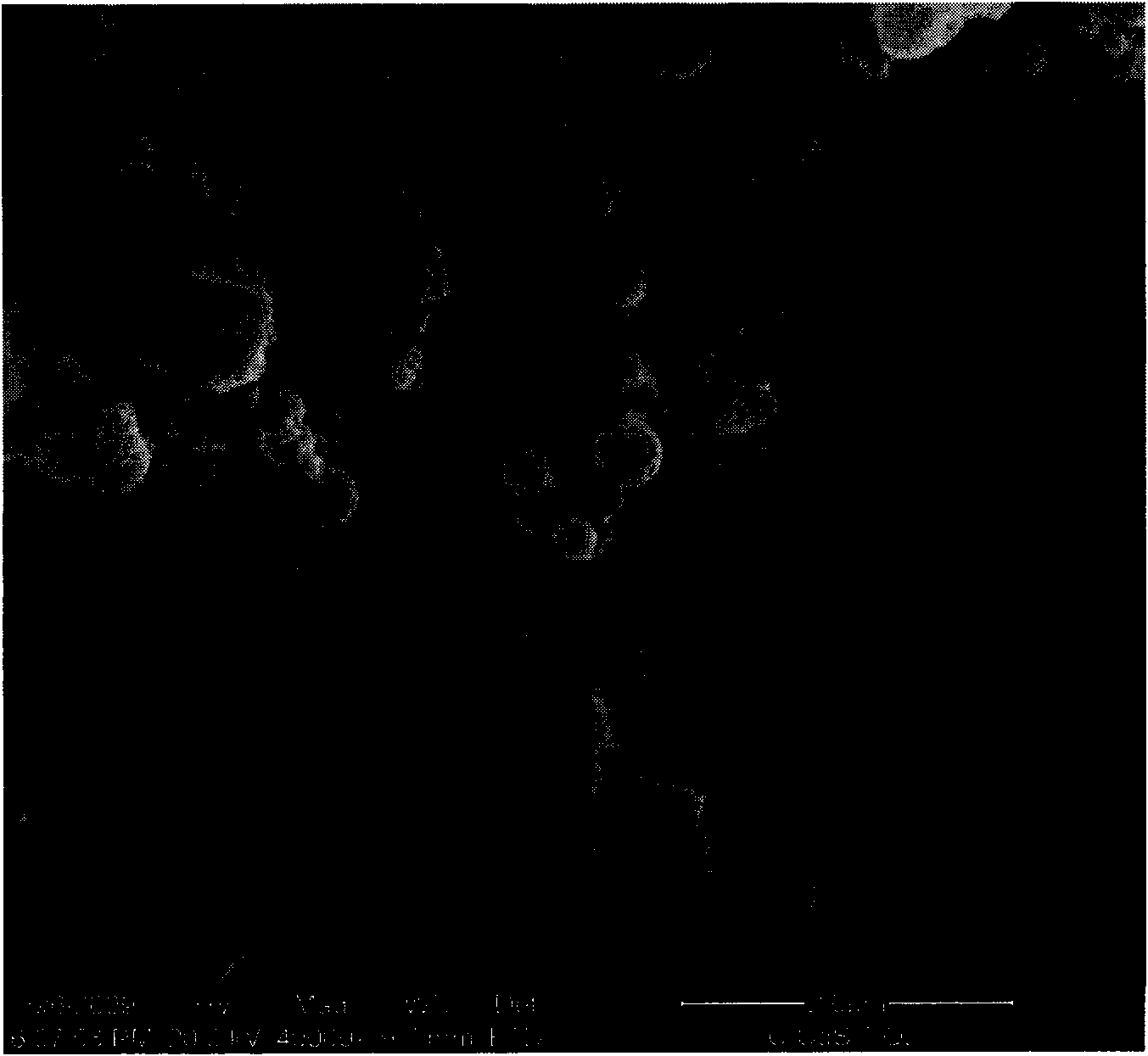Preparation for compound hollow sphere CdS-TiO* and application in photocatalytic hydrogen production by water decomposition
A technology for catalytic decomposition and hollow spheres, which is used in catalyst activation/preparation, physical/chemical process catalysts, hydrogen production, etc., to achieve the effects of improved hydrogen production efficiency, improved utilization efficiency, and simple and easy process.
- Summary
- Abstract
- Description
- Claims
- Application Information
AI Technical Summary
Problems solved by technology
Method used
Image
Examples
Embodiment 1
[0091] Weigh 15g of glucose solid powder, measure 150mL of deionized water, dissolve the glucose solid powder in deionized water, and stir evenly for 10min.
[0092] Pour the formed homogeneous solution into a polytetrafluoroethylene-lined autoclave (volume 200mL), put it in an electric heating box and heat it to 165°C, keep it warm for 5h, take it out and let it cool down to room temperature naturally. Filter, wash with deionized water and absolute ethanol three times respectively, and put the solid in a drying oven at 60° C. for 5 hours to obtain brown carbon nanospheres.
[0093] Weigh 60 g (5 mol) of the prepared brown carbon nanospheres, put them into a beaker of absolute ethanol, ultrasonicate for 30 min at a frequency of 31 Hz, and dry at 50° C. Weigh 42g (0.14mol) Cd(NO 3 ) 2 4H 2 O solid, was added to 80mL deionized water to prepare an aqueous solution. The solution was immersed in 60g carbon nanospheres, soaked for 2h, and dried at room temperature to obtain a co...
Embodiment 2
[0100] Weigh 1.25g of Na of the sacrificial agent respectively 2 S and 0.25g Na 2 SO 3 Dissolve in a 100mL Prex glass flat-bottomed reaction bottle with a flat lighted side containing 50mL of distilled water. Weigh the composite hollow sphere CdS-TiO prepared in Example 1 2 Add 0.10 g of nano powder into the reaction flask.
[0101] Put the reaction bottle on the magnetic stirrer to stir, insert the three-way sampling glass bottle stopper into the reaction bottle, use the xenon lamp as the simulated sun light source, turn on the xenon lamp constant current power supply, and filter out the ultraviolet light of λ2 Photocatalytic water splitting hydrogen production activity of the catalyst. The detection of hydrogen adopts TCD detector equipped with gas chromatograph and TDX-01 packed column. Solar visible light catalytic decomposition of water to produce H 2 The results are shown in Table 1.
[0102] Table 1: Composite hollow sphere CdS-TiO 2 Solar visible light catalytic...
Embodiment 3
[0105] Whole implementation step is identical with embodiment 1, and difference is: (1) take by weighing 24g (0.78mol) Cd (NO 3 ) 2 4H 2 O solid, join 80mL deionized water, be mixed with aqueous solution; (2) weigh 22.46g (0.0936mol) Na 2 S·9H 2 O solid, deionized water, prepared as an aqueous solution.
PUM
 Login to View More
Login to View More Abstract
Description
Claims
Application Information
 Login to View More
Login to View More - R&D
- Intellectual Property
- Life Sciences
- Materials
- Tech Scout
- Unparalleled Data Quality
- Higher Quality Content
- 60% Fewer Hallucinations
Browse by: Latest US Patents, China's latest patents, Technical Efficacy Thesaurus, Application Domain, Technology Topic, Popular Technical Reports.
© 2025 PatSnap. All rights reserved.Legal|Privacy policy|Modern Slavery Act Transparency Statement|Sitemap|About US| Contact US: help@patsnap.com



